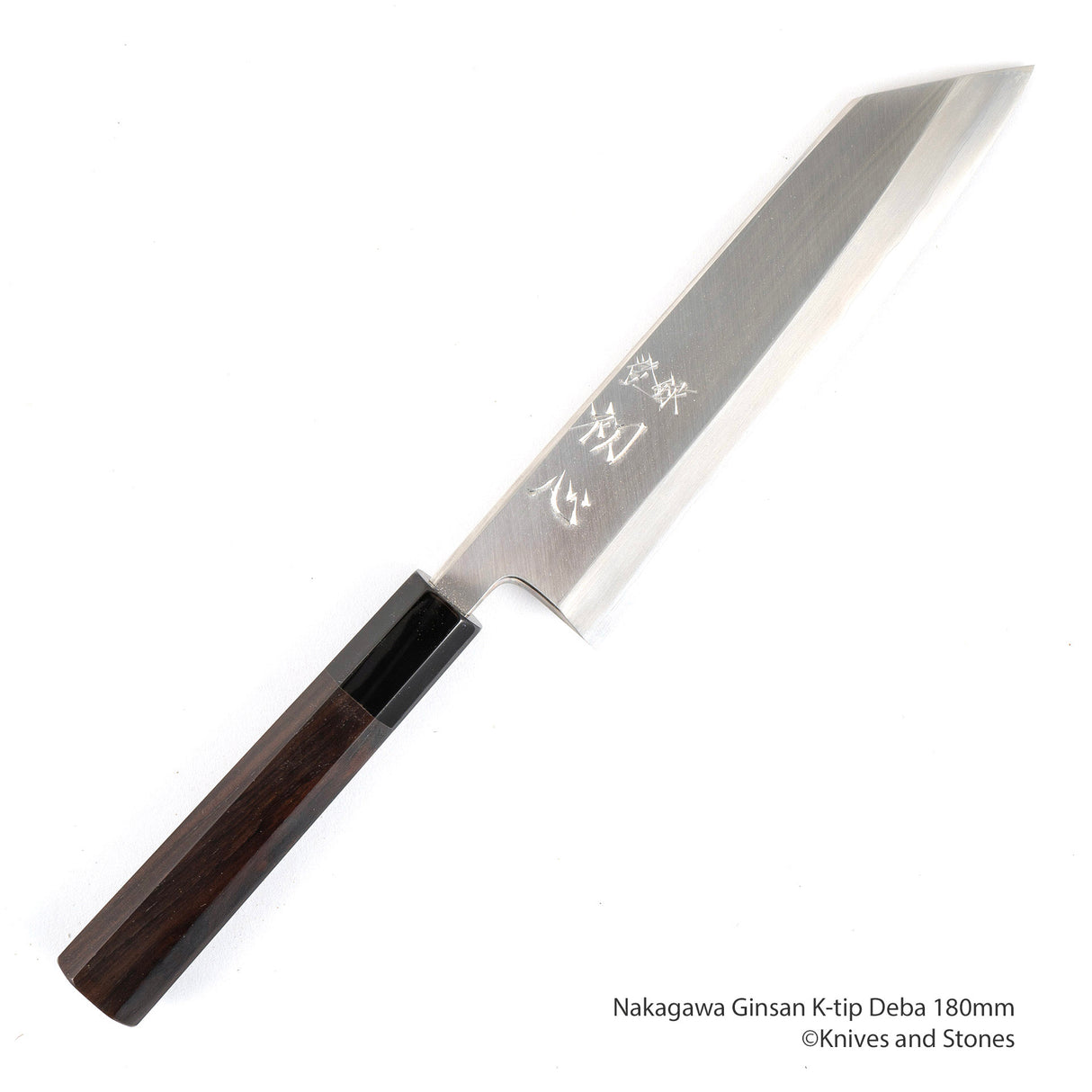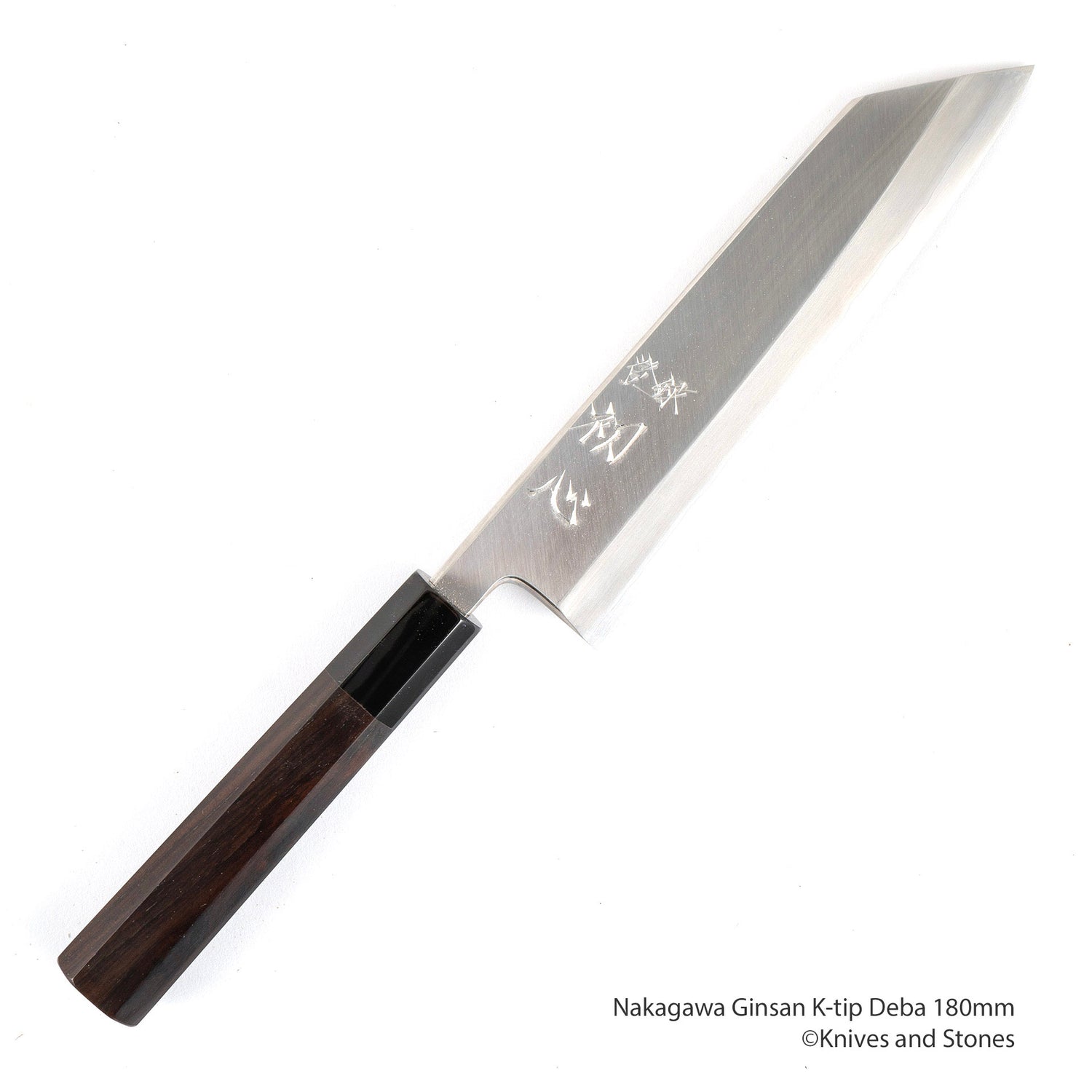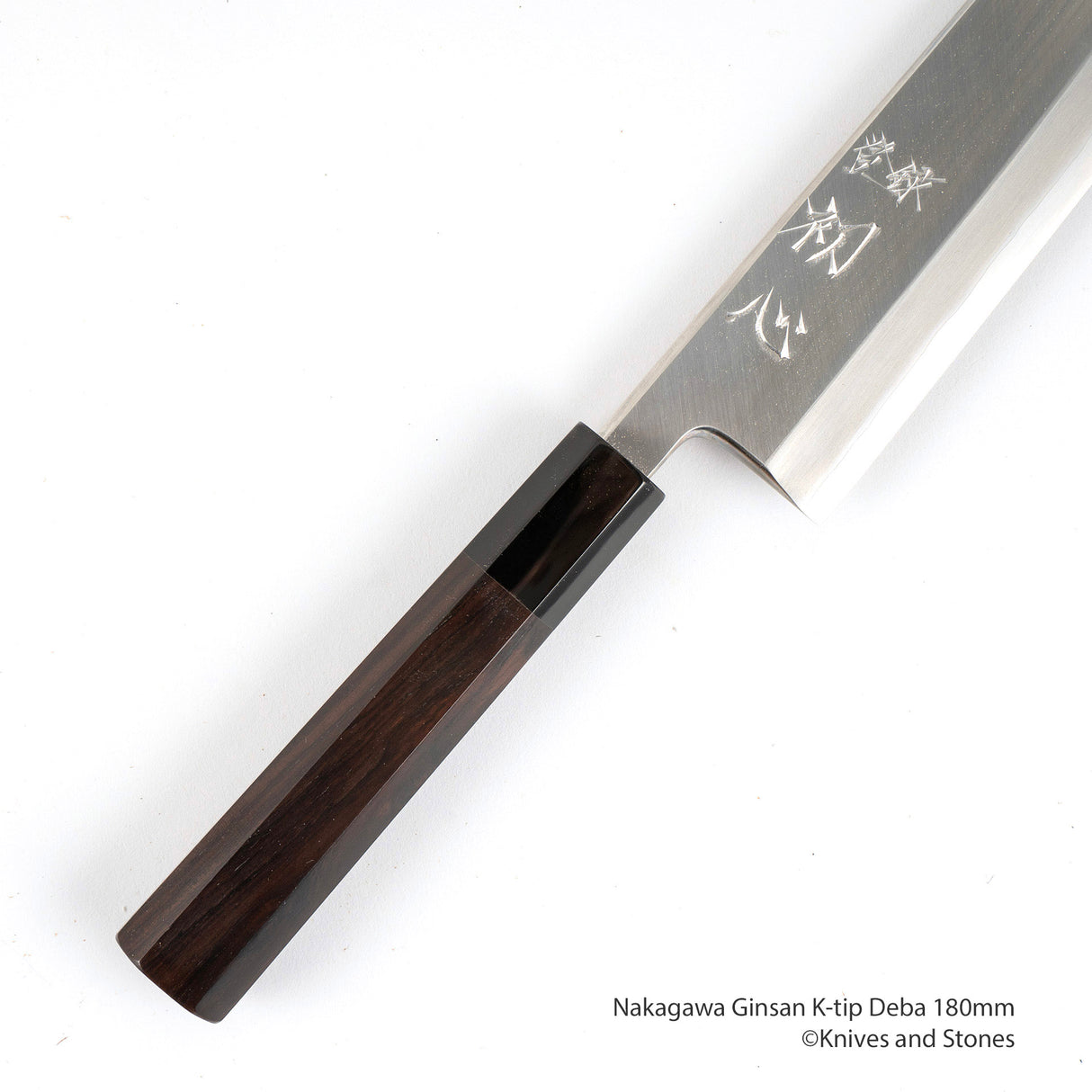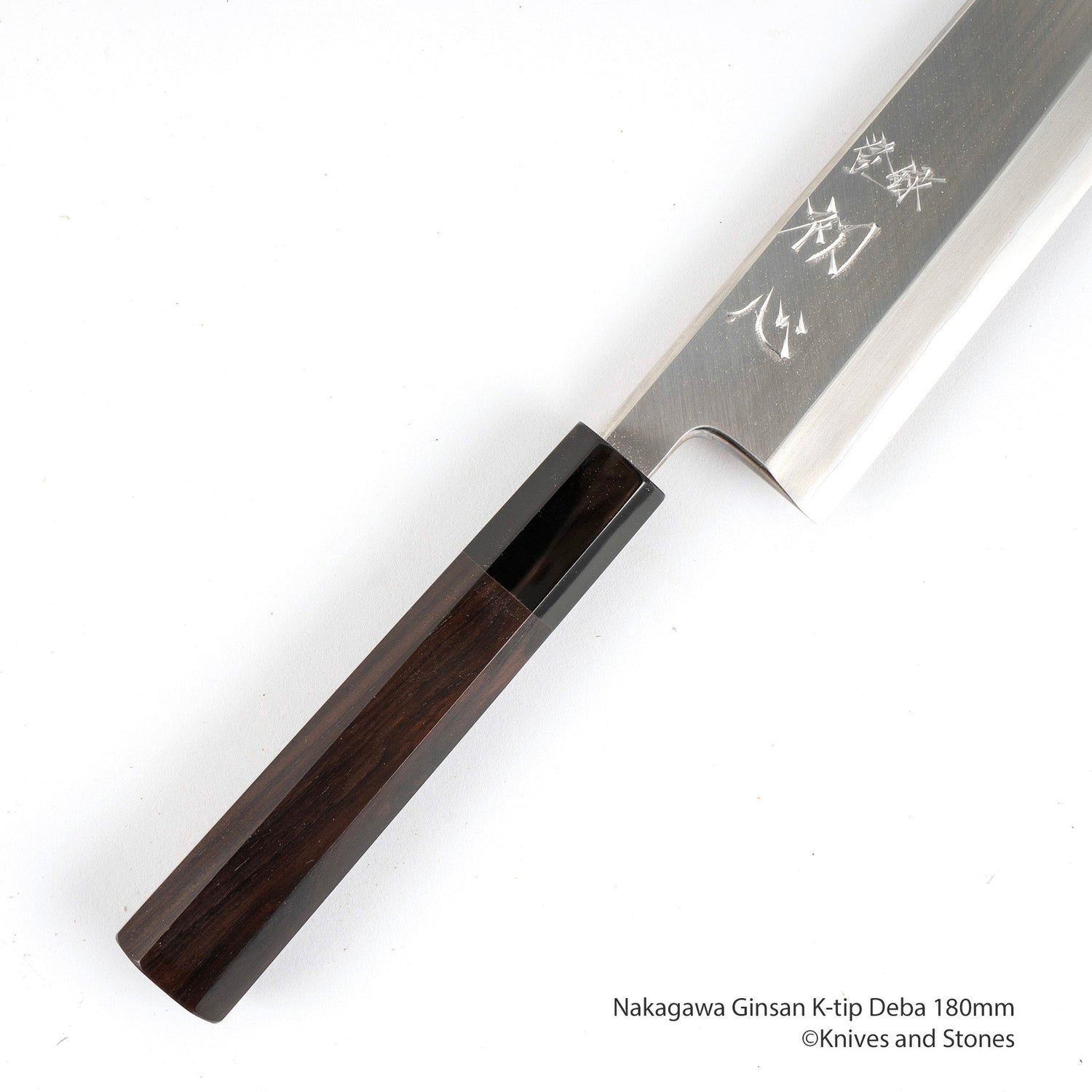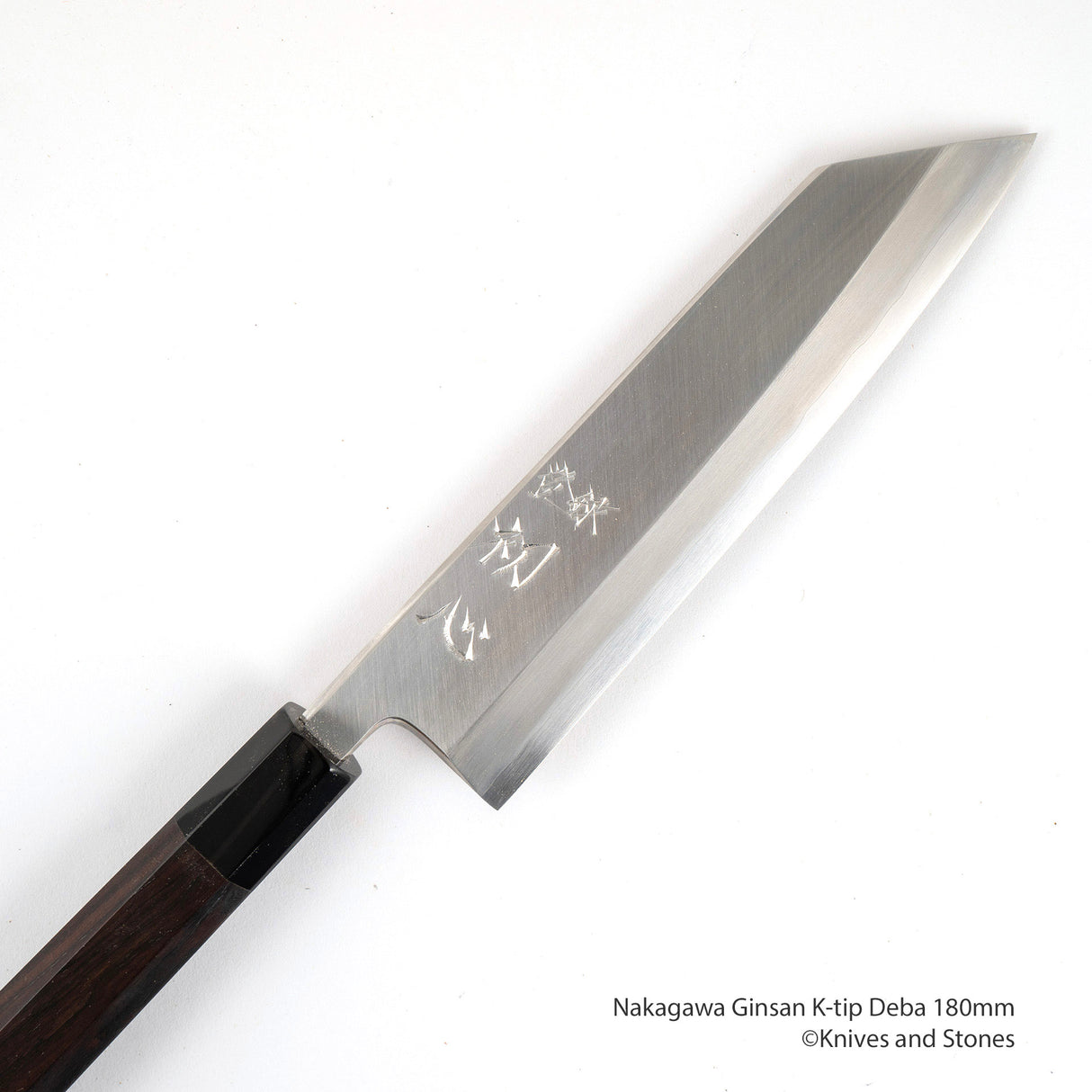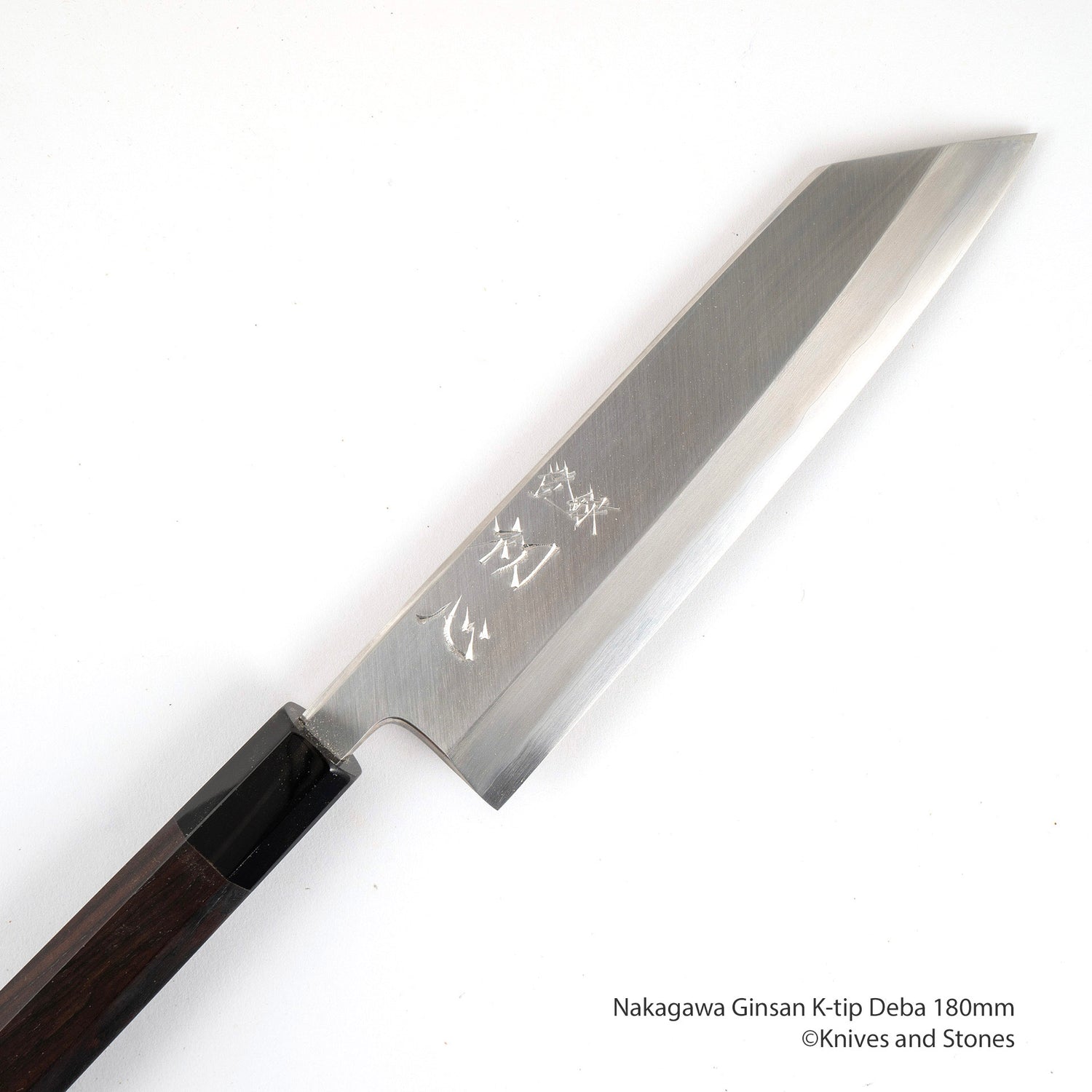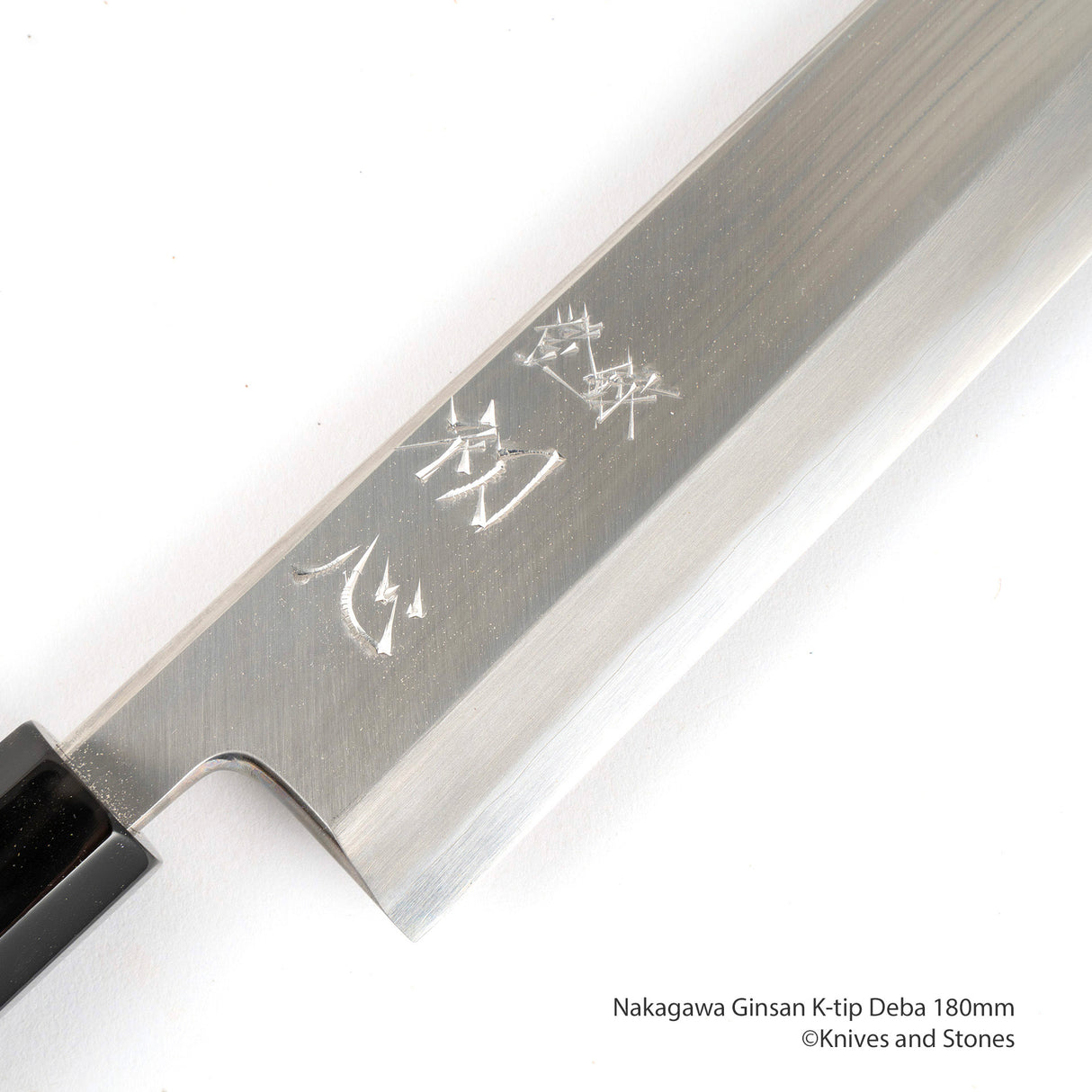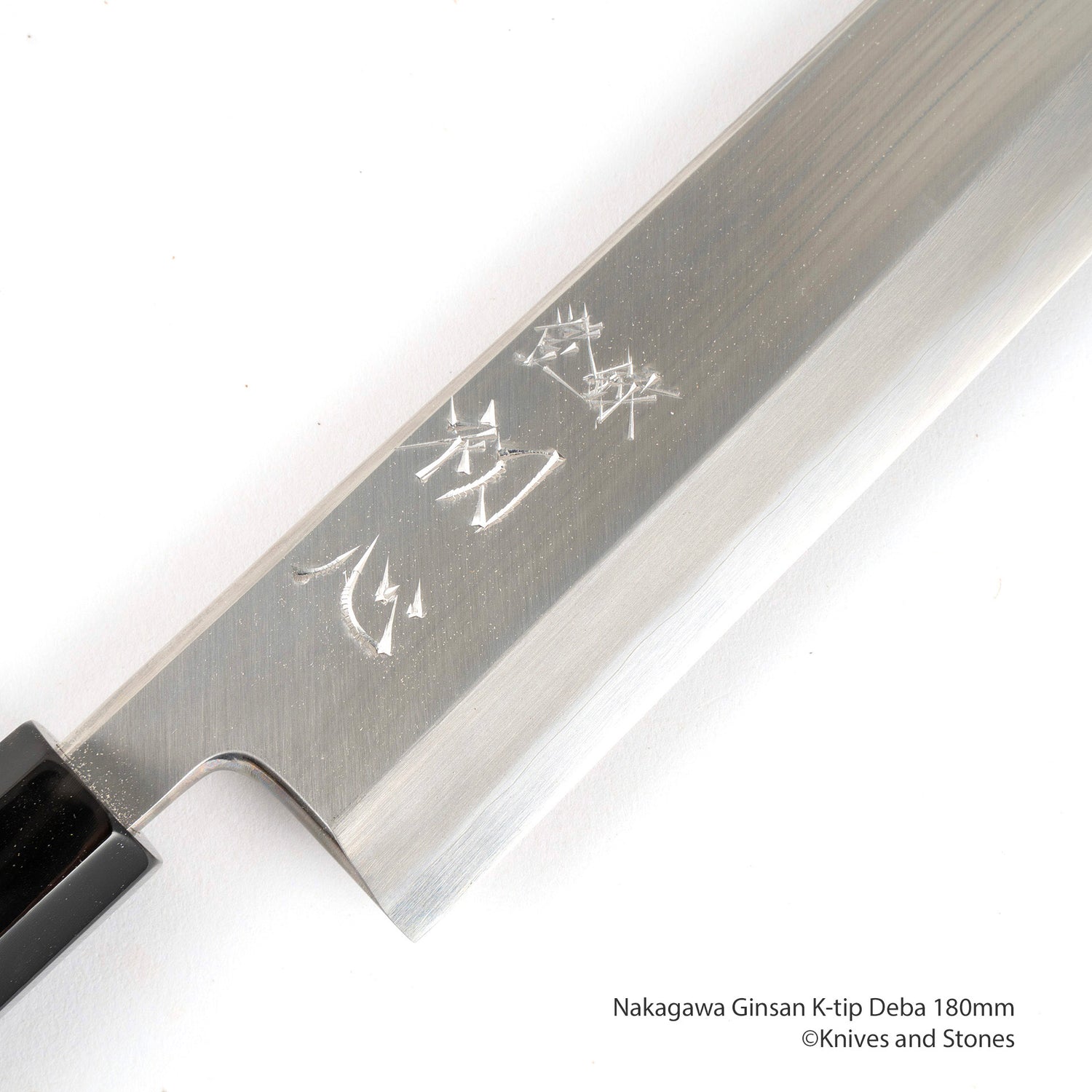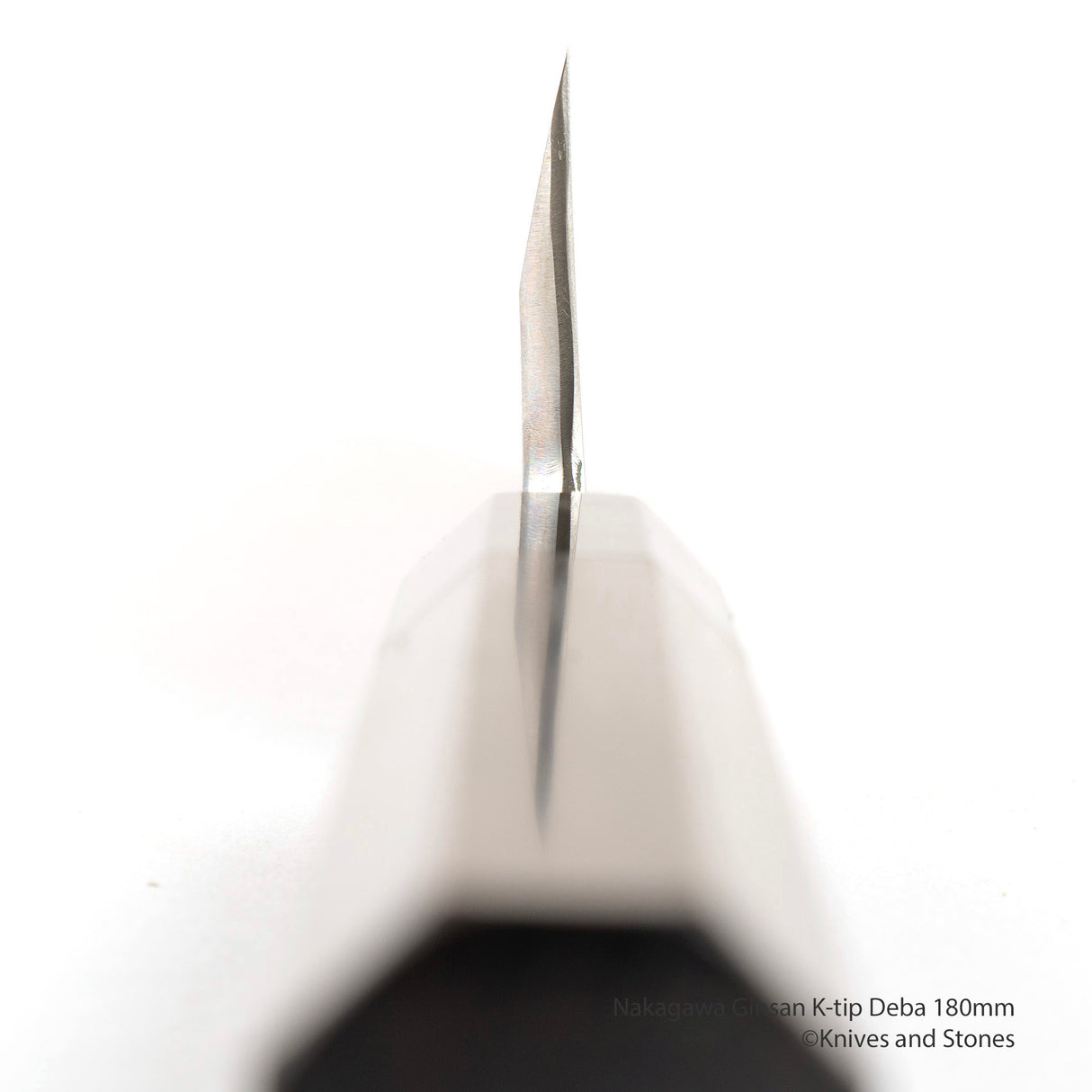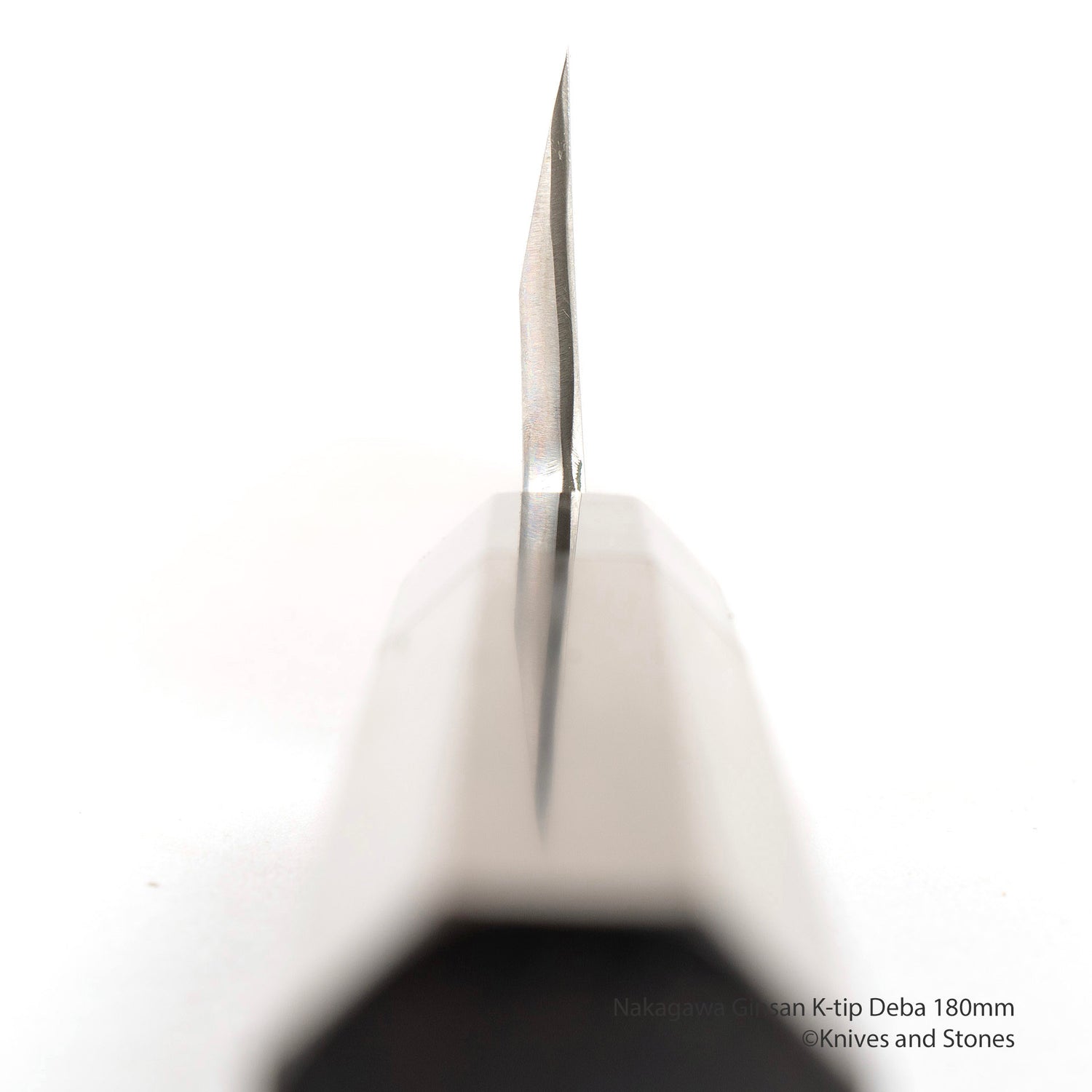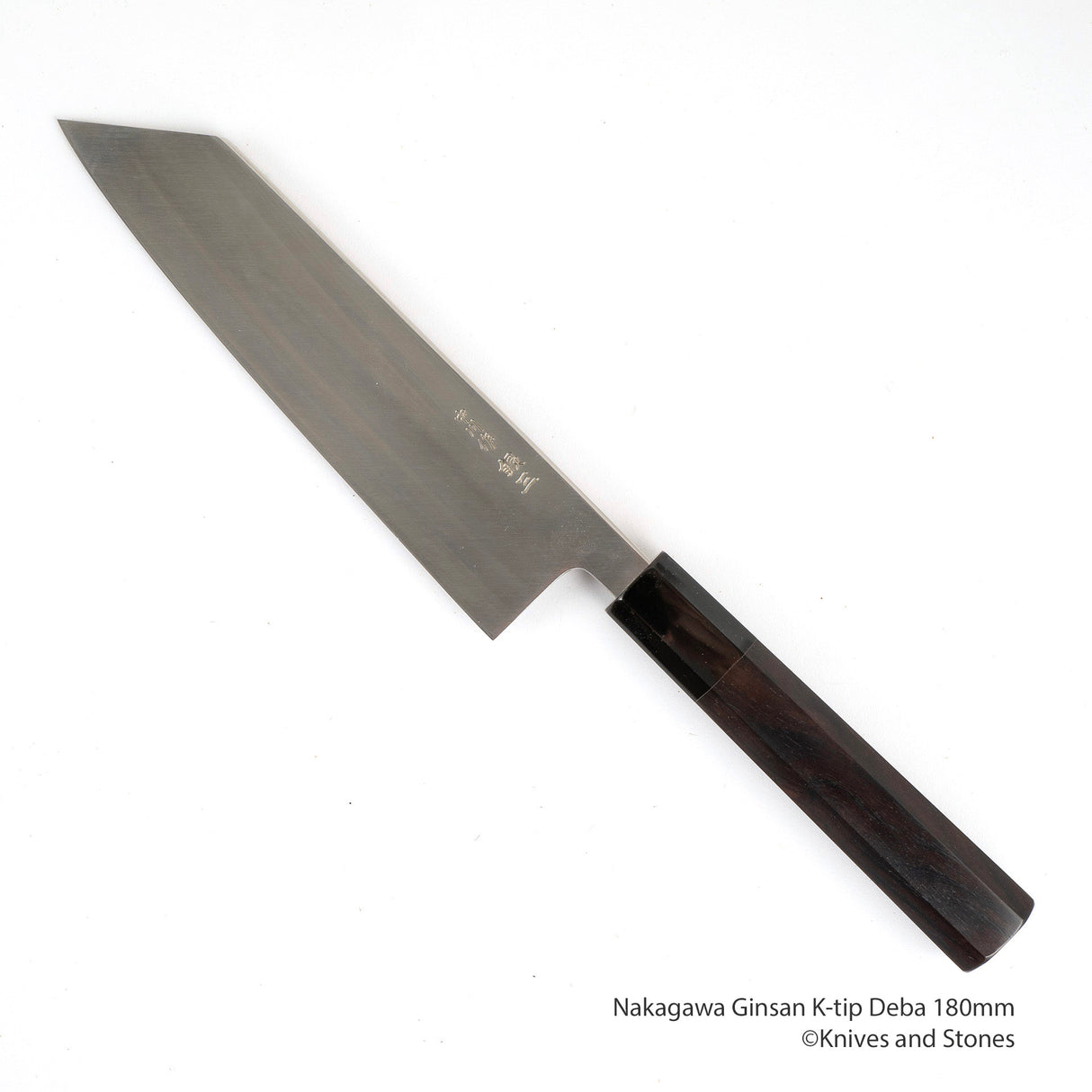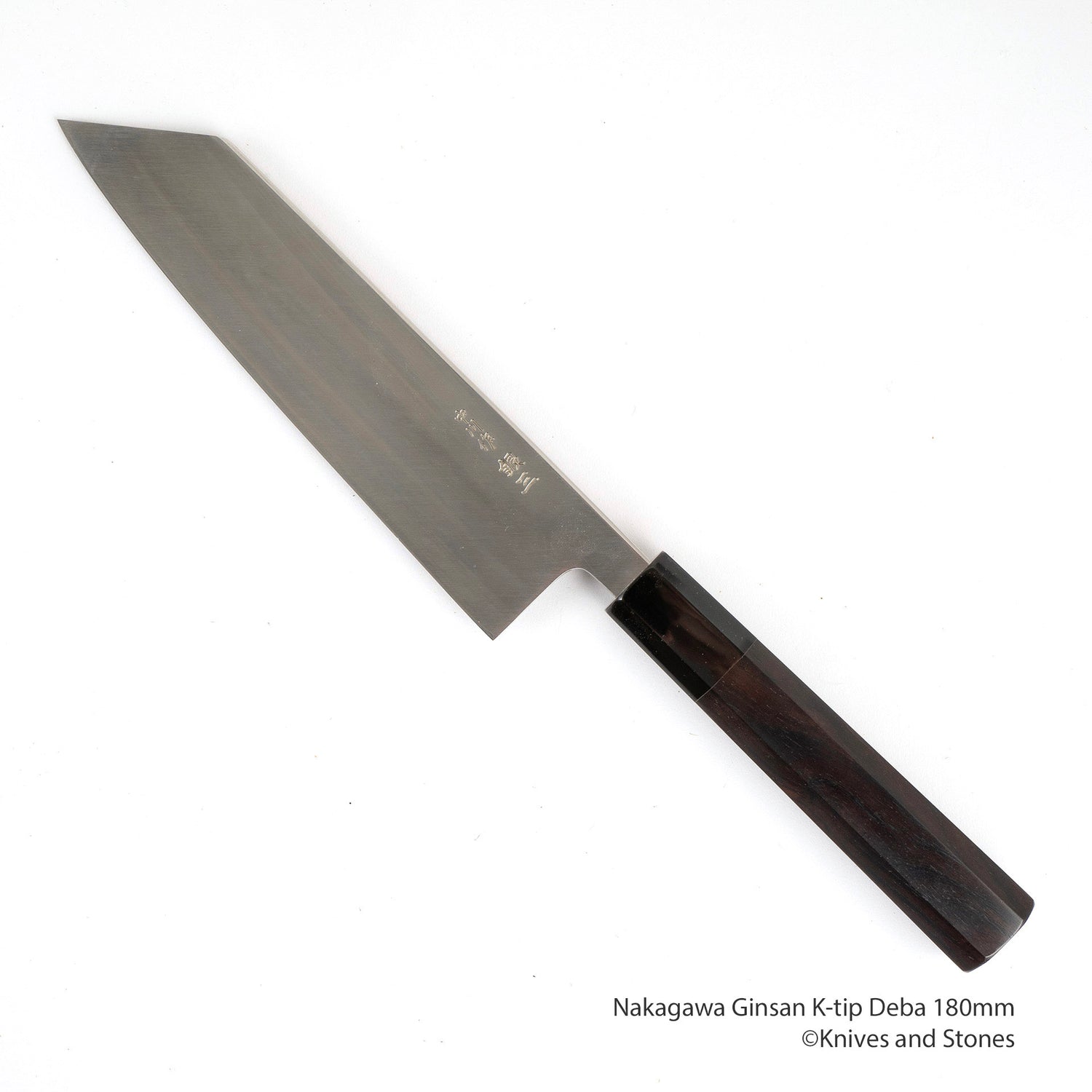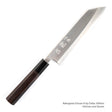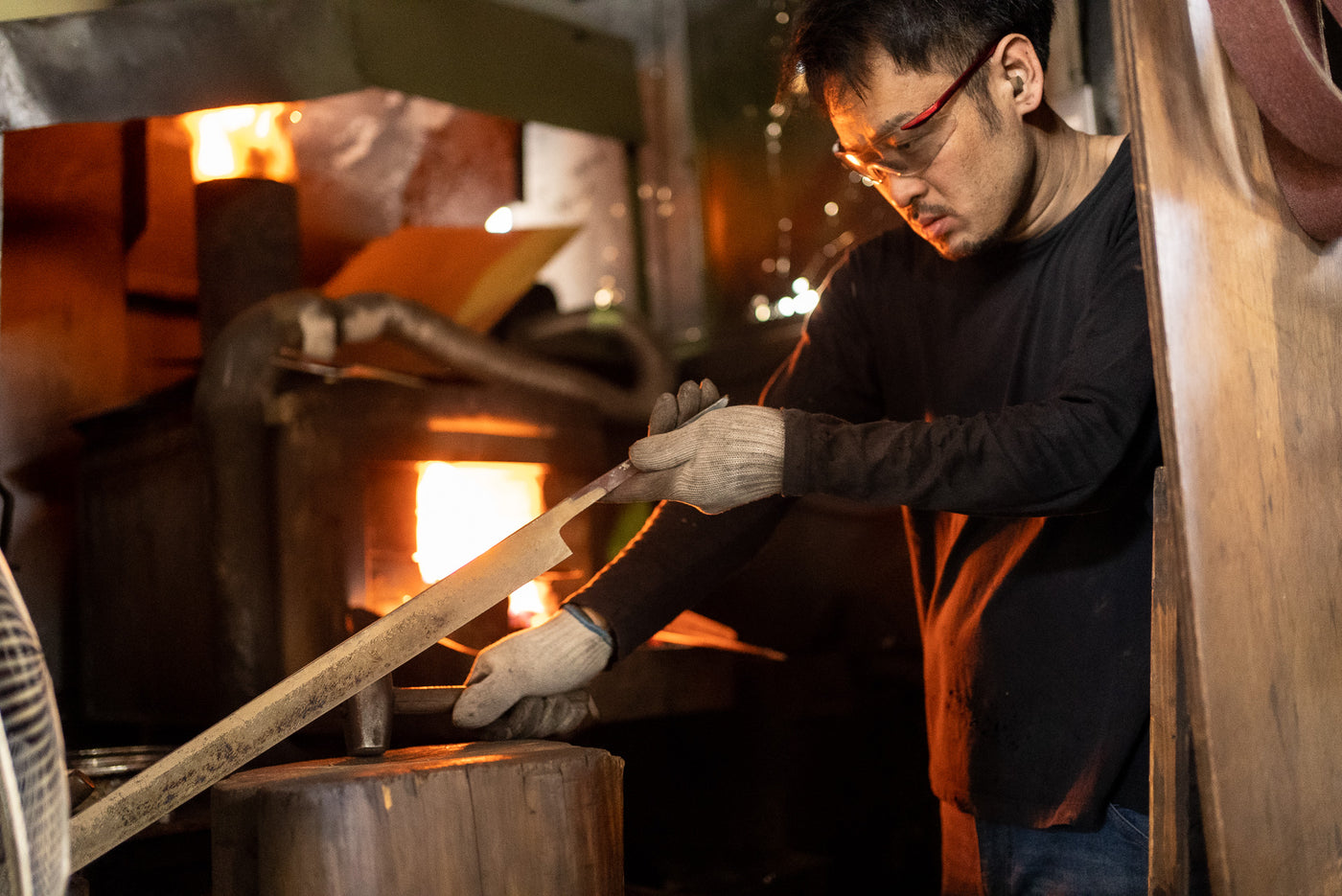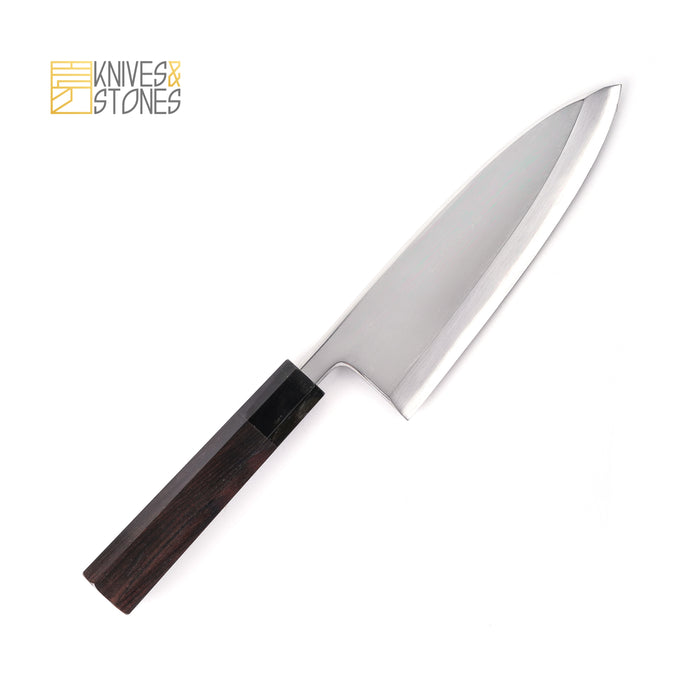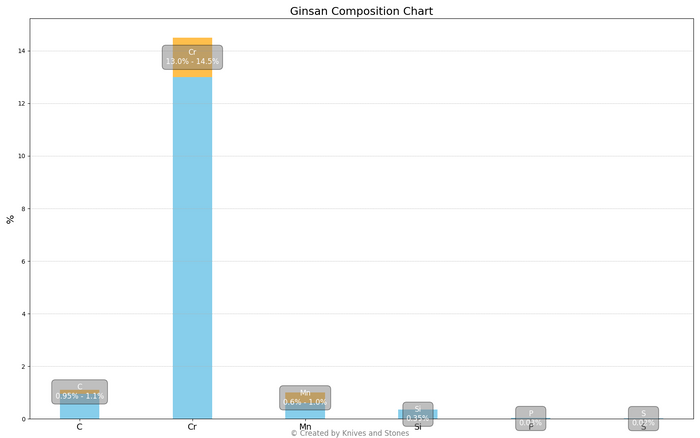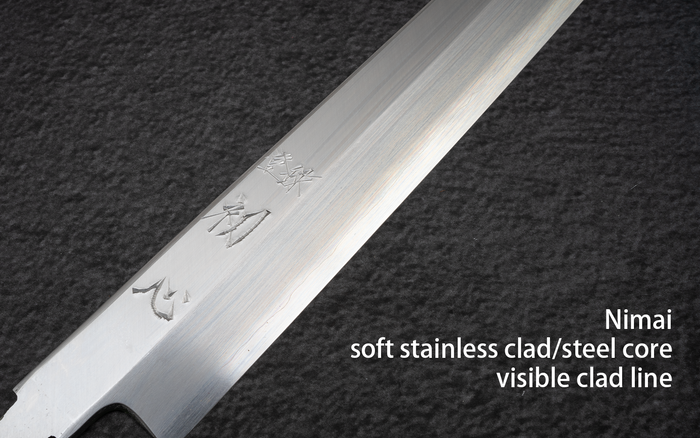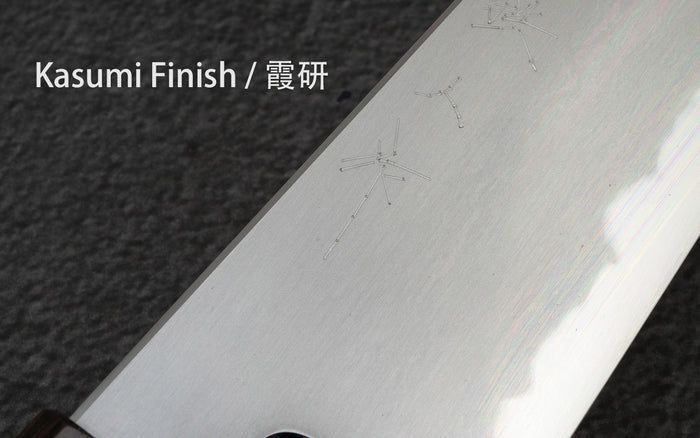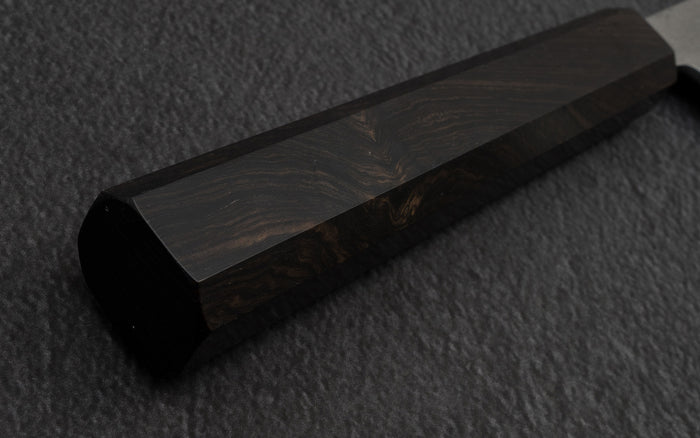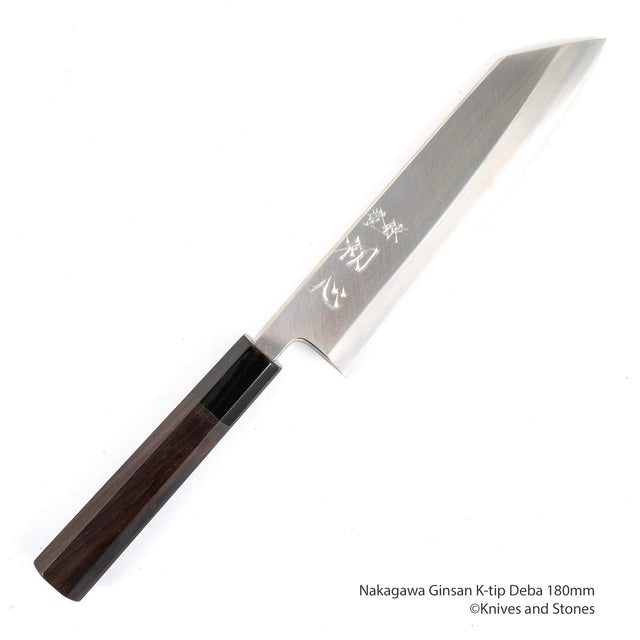Nakagawa | SKU:
NK-GINSAN-DE180
Nakagawa Ginsan K-tip Deba 180mm
$499.95
Unit price
/
Unavailable
Tax included
Shipping calculated at checkout.
Nakagawa Ginsan K-tip Deba 180mm is backordered and will ship as soon as it is back in stock.
Couldn't load pickup availability
Detailed Specifications
| Line | Hatsukokoro by Nakagawa Ginsan Single bevel Kasumi |
| Profile | Deba |
| Bevel Type | Single Bevel |
| Weight | 279 g 9.84 oz |
| Edge Length | 182 mm .7.17 inch |
| Heel Height | 45 mm .1.77 inch |
| Width @ Spine | 5.4 mm 0.21 inch |
| Width @ Mid | 4.6 mm 0.18 inch |
| Width @ 1cm from Tip | 2.4 mm 0.09 inch |
| Steel | Ginsan / Silver #3 | Stainless |
| Blade Construction | Nimai - Stainless Clad |
| Hardness (HRC) | 60 - 62 |
| Surface Finish | Kasumi |
| Handle | Octagonal Ebony |
| Region | Sakai |
| Best for |
|

| Pros | Cons |
|
|
|
Care Instruction
- Don't cut hard things! Japanese knives are brittle so bone hacking is a NO NO!
- Wash with netural detergent after use, and wipe dry;
- Please don't wash knife with dishwasher, it will damage the wood handle;
- Be careful not to leave the knife close to a heat source for a long time;
- It is a lot more dangerous to cut with a blunt knife than a sharp knife!
- It is best to sharpen a Japanese knife regularly on a waterstone.

